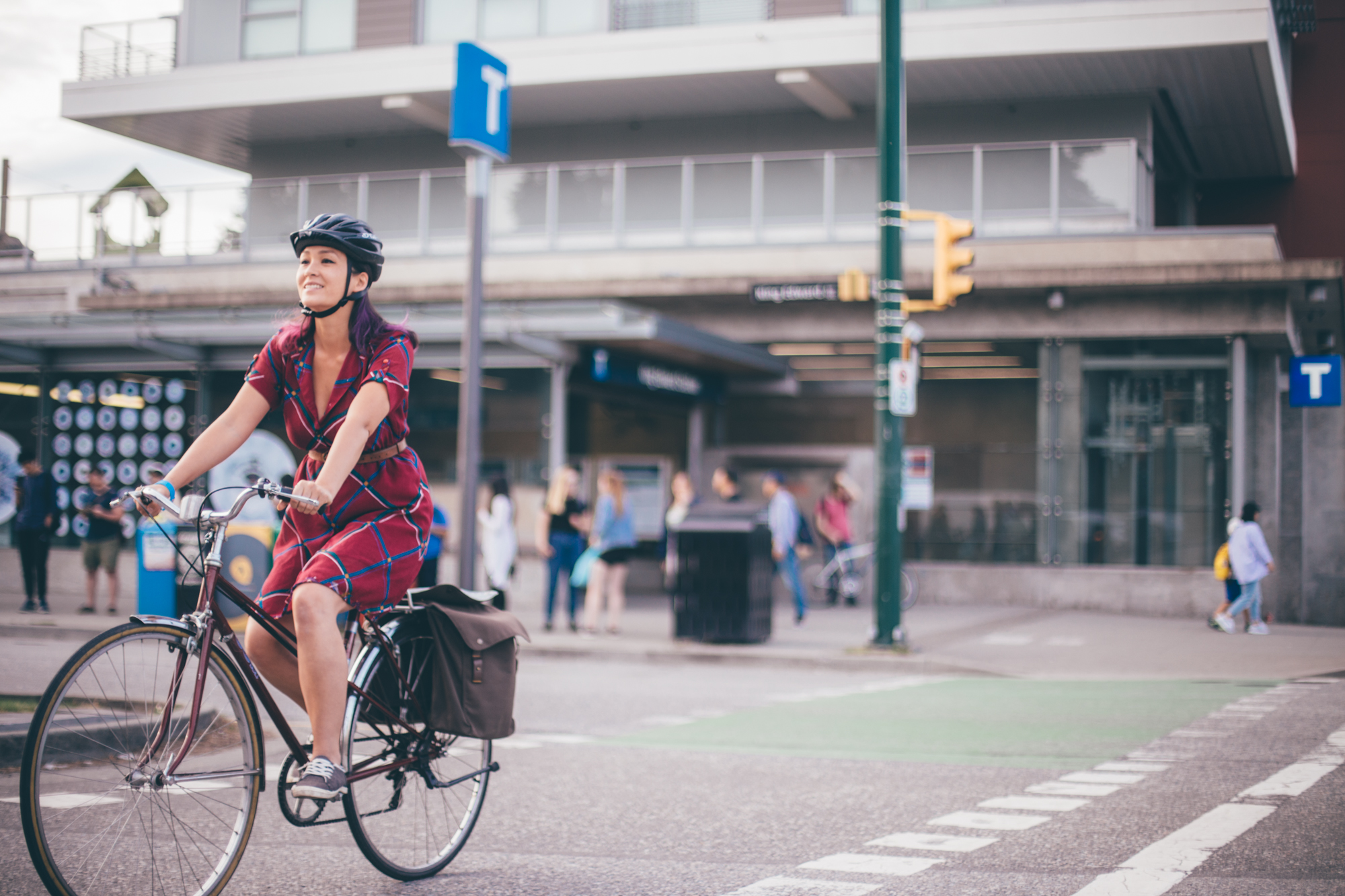A cyclist’s guide to keeping your bike safe when riding transit
A cyclist’s guide to keeping your bike safe when riding transit

Cycling can be one of the fastest ways to get around, especially in more urban areas. You can travel five-times further biking for the same amount of time and energy spent walking.
Bikes and transit just go together. Combining the two of them is a safe, efficient, and environmentally friendly way to get around Metro Vancouver. Here at TransLink, we work hard to make this kind of multi-modal transportation as easy as possible!
Where to park your bike when riding it to transit
- Bike Parkades: indoor facilities with multiple bike racks are located at select SkyTrain and West Coast Express stations. The cost is $1 per day, up to a maximum of $8 per month to park your bike.
- Bike Lockers: a reserved locker at select SkyTrain and West Coast Express stations, as well as bus exchanges for your bike. There are also on-demand lockers available at select locations.
- Bike Racks: outdoor racks for locking your bike up. These are available across our transit system and can be used free of charge.
In 2022, we provided $36 million through our Municipal Funding Program to support maintaining, upgrading, and building new walking, cycling, and multi-use paths projects in municipalities across Metro Vancouver.
No matter where you’re riding, keeping your bike safe is certainly a big concern. According to the Vancouver Police Department, more than 2,000 bikes are reported stolen every year.
Here are some tips on how to keep your bike safe when riding it!
Register with 529 Garage
529 Garage allows you to register your bike easily and securely in just minutes, complete with images and all the necessary details law enforcement requires to expedite the recovery process.
It was launched in Vancouver in 2015, and since then, bicycle theft has dropped by 40 per cent in Vancouver. The project helps recover stolen bikes on a regular basis.
Location, location, location
Choose a secure area when locking up your bike, specifically well-lit and highly visible public areas. If you’re locking up in public, make sure it’s in a high-traffic area and the bike is locked to something that’s securely bolted to the ground.
Invest in a good lock
Once you’ve found a secure location, you want to make sure you’re using a good lock — that means no cable locks as your primary lock. Use a “U” lock, which will be more difficult for thieves to cut.
Use good locking technique
When locking your bike, secure the most valuable parts of the bike first, which is the frame and the wheel. Use the secondary cable lock to secure the front tire to the first lock.
Use a snug lock to minimize the space and leverage that a thief can use. Keep the lock off the ground, where a thief can smash it with a hammer — but keep it as close to the bottom bracket as possible. Make the lock difficult to get to.
Don’t leave it in public for extended periods
Try to avoid leaving your bike locked up for extended periods of time. The longer it sits there, the higher the probability it has of being stolen.
Find and record your serial number
If you flip the bike over, you’ll find the serial number located on the underside or on the part of the frame the pedals are attached to.
Record the number and register it with 529 Garage.
If your bike gets stolen and you report it to the police, the serial number will help the police locate you should the bike be recovered.
Take photos of your bike
This helps police identify it in the event it is stolen.
Take note of things that make it stand out such as unique stickers or colours.
Track it
Consider using an aftermarket tracking system you can mount in a discreet location on the bike.
Keep our Bike Parkades secure
If you use one of our Bike Parkades, make sure the door is secure behind you when entering and exiting.
This way, you’re keeping both your bike and other bikes safe!
![]()
By taking the time to use these tips, you help minimize the chances of your bike being stolen.






Your guide is very practical for me personally, thank you very much!